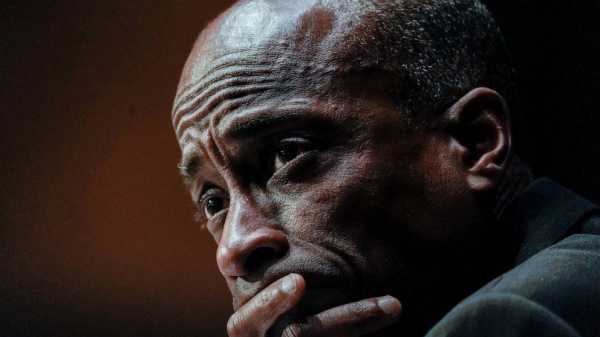
WASHINGTON — Federal Reserve governor Philip Jefferson said Friday that inflation remains too high and there has been “little progress” made toward bringing it down to the central bank's 2% target, a pessimistic assessment given signs in a report earlier this week that price increases might be slowing.
Jefferson, who was nominated by President Joe Biden earlier Friday to the position of Fed vice chair, also said in a speech at the Hoover Institution in California that the turmoil in the U.S. financial system following the failure of three large banks will likely have only a limited impact on the economy.
Jefferson's potential elevation to the No. 2 spot on the Fed's seven-member board would give him greater influence over interest rate policy and make him a close colleague of Chair Jerome Powell.
While inflation has declined from its June peak by about 2.75 percentage points to 4.2% in March, compared with a year ago, Jefferson said that “nearly all” of the decline stemmed from falling energy and food prices.
“The bad news is that there has been little progress on core inflation,” he said. Core prices exclude the volatile food and energy categories and are considered to be a better measure of underlying inflation.
Jefferson also cited a closely watched metric often cited by Powell, which tracks the prices of services, from medical care to dining out, while excluding energy and housing costs. That measure “has not shown much sign of slowing,” Jefferson said.
After the Fed's most recent policy meeting last week, the central bank suggested in a statement that it could pause its interest rate increases at its next meeting in June, after lifting its key rate 10 times in a row. The hikes are intended to slow spending, growth, and inflation.
Jefferson did not hint in his remarks whether he would support such a pause.
Many Fed officials are closely monitoring the impact of the failure of three large banks in the past two months. A recent Fed report showed that banks have been pulling back on lending for months and slightly accelerated that tightening in the wake of the bank failures.
If banks become more reluctant to lend, that could slow the economy and reduce the need for the Fed to lift its key rate.
Jefferson said he expected little impact from the bank failures, saying they will likely have “a mild retardant effect” on the economy, though he added that it is “too early to tell.”
His comments followed a report Wednesday that showed inflation ticked down slightly in April, though remained high. Compared with a year ago, consumer prices rose 4.9%, down from a 5% yearly increase the previous month — lowest year-over-year increase in two years. But that index — the consumer price index — has fallen further than the Fed’s preferred measure, which will be updated May 26.
One of Jefferson’s fellow Fed governors, Michelle Bowman, spoke earlier Friday in Europe and also expressed disappointment with the progress made toward taming inflation so far. She hinted that she might support another rate hike at the June meeting.
“Should inflation remain high and the labor market remain tight,” further rate increases “will likely be appropriate” to lower inflation, Bowman said.
So far, recent inflation and jobs reports “have not provided consistent evidence that inflation is on a downward path.”
Tom Barkin, president of the Federal Reserve Bank of Richmond, on Wednesday also expressed disappointment with stubbornly high levels of inflation in an interview with The Associated Press.
Core inflation has been stuck in a range of 0.3%-0.5% for months, Barkin said, “where you’d really like it to be moving down and in concert with our target.”
Sourse: abcnews.go.com






